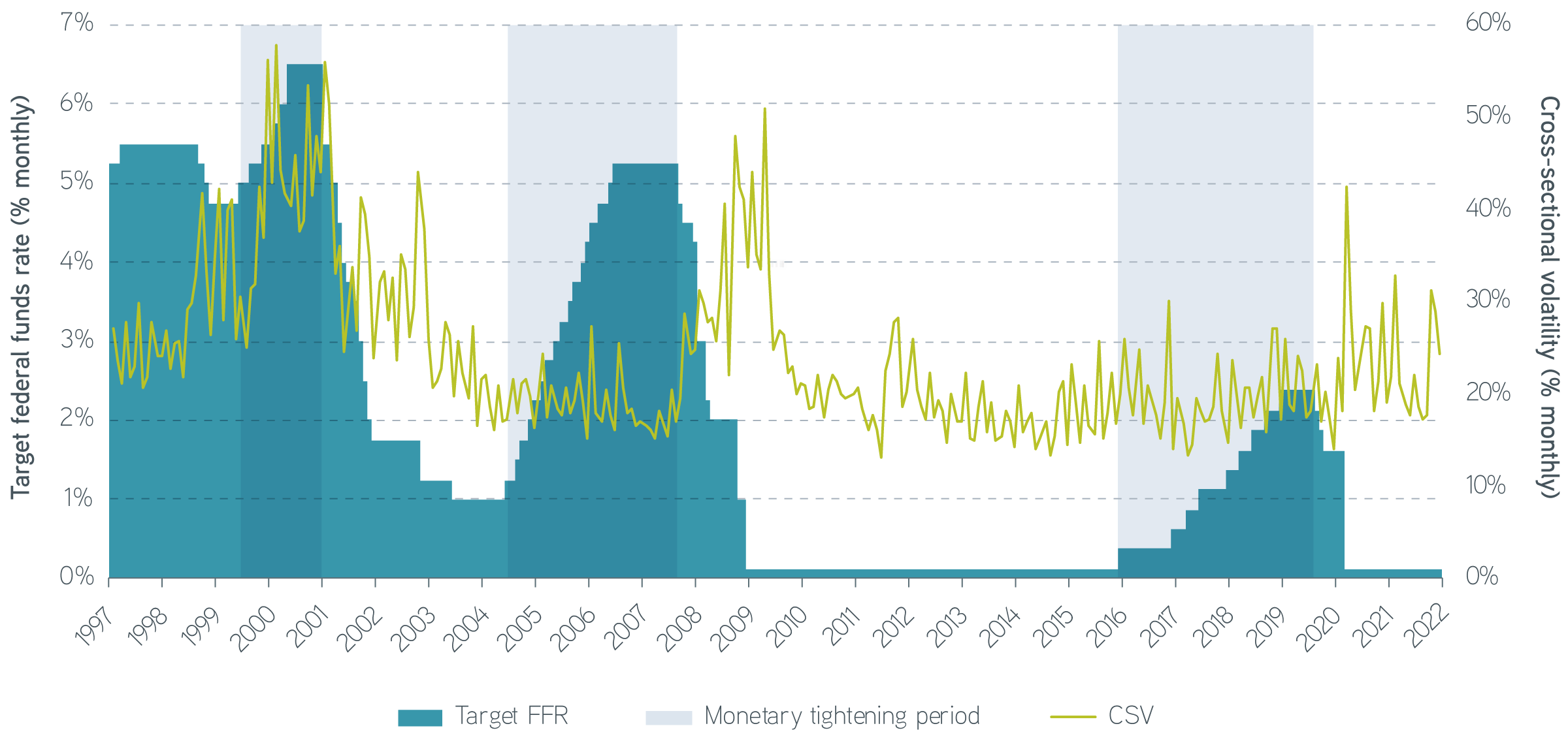The UK gilts market experienced a frightening yet fascinating spike. We discuss what happened and the lessons US pensions can learn from the drama.
The Bank of England (BoE) had to step back into the gilts market in late September to prevent a liability-driven investing (LDI) margin spiral across UK pensions schemes. These operations continued through mid-October, restoring some stability to the system. While we’re now seeing relative calm in the market compared with few weeks ago, we think it’s a good time to review the events and apply this episode’s lessons to pensions implementing LDI in the US.
What sparked the UK’s pension crisis?
The size of UK pension schemes is massive on a relative basis—similar in magnitude to the entire gilts market and UK economy. The UK liability-driven investing (LDI) market has evolved so that liability matching is a pillar of their investment strategies. UK pensions are adept at matching interest rate exposure in their liabilities through conventional and index-linked gilts. However, a substantial portion of the interest rate hedging is achieved through leverage, either directly through repurchasing agreements or derivatives or indirectly through levered pooled vehicles. In any event, this leverage requires margin to support mark-to-market value occurring with yield changes. Meanwhile, inflation and other geopolitical events have led to generally increasing yields globally. This environment led to decreasing values in LDI assets as well as pension liabilities. By and large, the LDI strategies worked as liabilities and assets moved together, and funding ratios remained reasonably stable or even improved.
All that changed when the UK government unveiled an unexpected economic policy framework on September 23, bringing such a sudden shock to the gilts curve that pensions found themselves stranded in a harmful feedback loop. Increasing gilt yields created margin calls, but this time there were not enough liquid assets available, leading to forced sales of gilts and fueling ever-increasing yields. The cruel irony of this situation is that while pension liquidity was rapidly deteriorating, funded ratios may have been improving. By September 28 the BoE had to step in to buy gilts, in a move contrary to its quantitative tightening program, in order to stabilize markets and save pensions. In matter of a few days, 30-year gilt yields experienced a round trip of over 100 basis points (bps).
UK 30-year gilts yield, September–October 2022

Source: Bloomberg, 10/18/2022. For illustrative purposes only. Not a recommendation to buy or sell any security.
Build the right balance of assets and liabilities
Could US pensions face a similar crisis?
The UK’s roller-coaster ride has opened the eyes of investors around the world, especially plan sponsors who use derivatives to hedge pension liabilities. On the one hand, the pension interest rate hedging market in the US is substantially smaller on a relative basis than the UK market, making a similar spiral less likely. On the other hand, interest rate volatility in the US is at historic highs, implying exceedingly high levels of uncertainty. The events in the UK illuminate the importance of liquidity to weather unforeseen events and prevent fire sales of distressed or illiquid assets. After years of relative calm, now is an opportunity to reevaluate which changes might be necessary to mitigate risk and improve pension outcomes.
Pension plans use derivatives in various ways to manage liquidity needs, asset allocations, and interest rate risks. Derivatives are a necessary and indispensable tool for managing pension risk in many plans. However, derivatives operate on margin, which means the plans must hold cash or bond collateral to support their derivative positions during adverse market moves. In the event of large market dislocations such as the UK LDI spiral, margin gets used up more quickly, and investors need to replenish margin balances to provide sufficient buffer for ongoing losses. With this in mind, plan sponsors should consider the following when building out their LDI liquidity playbook:
Consider a larger buffer. Until just recently, pensions implementing LDI have experienced ever-decreasing yields and relatively low interest rate volatility. Margin buffers supporting a yield-curve shock of 50 bps were largely sufficient in the past. However, the current environment suggests that buffers of at least 100 bps may be more prudent.
Construct and formalize a liquidity waterfall. This waterfall should identify all potential sources of liquidity ranked by ease of access and speed of settlement. Such a plan should include traditional hedging assets like long-duration Treasuries, STRIPS, or corporate bonds, as well as other liquid assets like intermediate-term bond ladders and public equities. This process may require an evaluation of the size of the portfolio’s illiquid portion relative to potential liquidity needs during periods of market stress.
Create a comprehensive, customized, and flexible LDI management plan. There’s no setting it and forgetting it in LDI. It’s a complex area of investing, and it requires a customized approach for plans to see the most value. A comprehensive overlay program can provide additional flexibility to manage several aspects of LDI. For example, sponsors can use synthetic equities to release cash to support LDI collateral while maintaining the target equity exposure. Sponsors can also use custom programs to improve yield-curve match through derivatives or cash-flow-matching ladders, or to derisk the plan through a glide path.
The bottom line
The UK crisis serves as a powerful lesson to investors across the globe. For US pensions with ever-growing LDI portfolios, there’s never been a better time to reevaluate their strategies with a renewed focus on liquidity. A comprehensive LDI program includes many moving parts, and the current environment makes coordinating these parts more challenging than ever. However, by taking time to examine their portfolios carefully, pensions can emerge prepared for the next stage of their LDI journeys.




